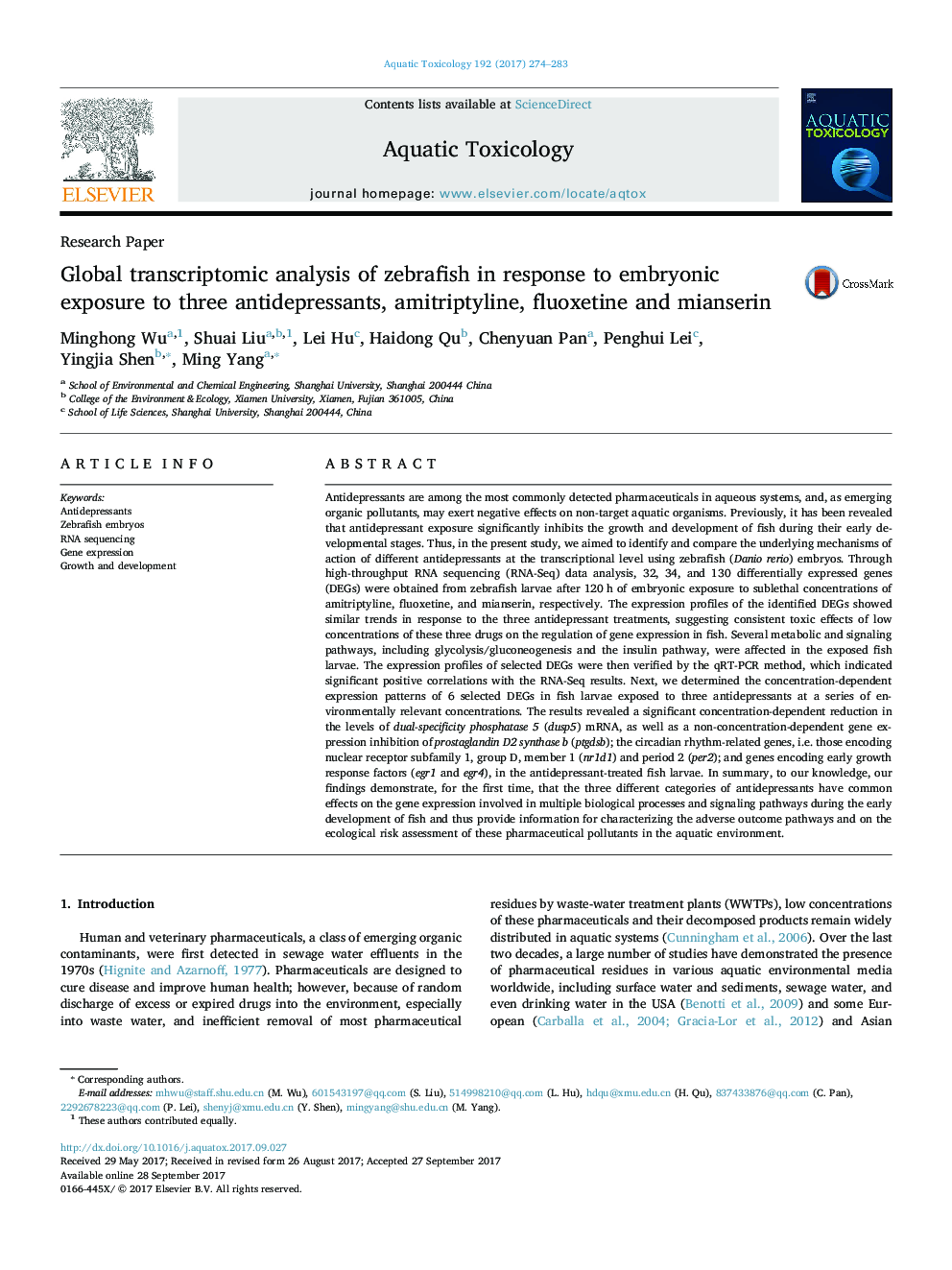| Article ID | Journal | Published Year | Pages | File Type |
|---|---|---|---|---|
| 5764145 | Aquatic Toxicology | 2017 | 10 Pages |
â¢Exposure to three different antidepressants affected the growth of zebrafish larvae.â¢High throughput RNA sequencing revealed that three drugs shared common effects.â¢Drugs altered dusp5, ptgdsb, clock gene and early growth response factor expression.â¢The AOPs of low antidepressant concentrations need further investigation.
Antidepressants are among the most commonly detected pharmaceuticals in aqueous systems, and, as emerging organic pollutants, may exert negative effects on non-target aquatic organisms. Previously, it has been revealed that antidepressant exposure significantly inhibits the growth and development of fish during their early developmental stages. Thus, in the present study, we aimed to identify and compare the underlying mechanisms of action of different antidepressants at the transcriptional level using zebrafish (Danio rerio) embryos. Through high-throughput RNA sequencing (RNA-Seq) data analysis, 32, 34, and 130 differentially expressed genes (DEGs) were obtained from zebrafish larvae after 120Â h of embryonic exposure to sublethal concentrations of amitriptyline, fluoxetine, and mianserin, respectively. The expression profiles of the identified DEGs showed similar trends in response to the three antidepressant treatments, suggesting consistent toxic effects of low concentrations of these three drugs on the regulation of gene expression in fish. Several metabolic and signaling pathways, including glycolysis/gluconeogenesis and the insulin pathway, were affected in the exposed fish larvae. The expression profiles of selected DEGs were then verified by the qRT-PCR method, which indicated significant positive correlations with the RNA-Seq results. Next, we determined the concentration-dependent expression patterns of 6 selected DEGs in fish larvae exposed to three antidepressants at a series of environmentally relevant concentrations. The results revealed a significant concentration-dependent reduction in the levels of dual-specificity phosphatase 5 (dusp5) mRNA, as well as a non-concentration-dependent gene expression inhibition of prostaglandin D2 synthase b (ptgdsb); the circadian rhythm-related genes, i.e. those encoding nuclear receptor subfamily 1, group D, member 1 (nr1d1) and period 2 (per2); and genes encoding early growth response factors (egr1 and egr4), in the antidepressant-treated fish larvae. In summary, to our knowledge, our findings demonstrate, for the first time, that the three different categories of antidepressants have common effects on the gene expression involved in multiple biological processes and signaling pathways during the early development of fish and thus provide information for characterizing the adverse outcome pathways and on the ecological risk assessment of these pharmaceutical pollutants in the aquatic environment.
